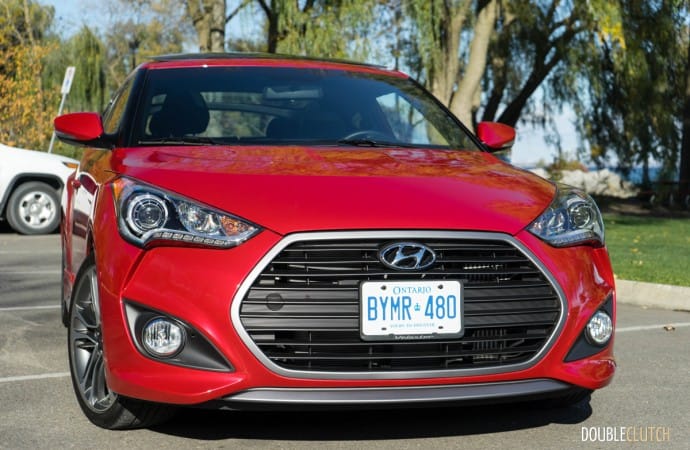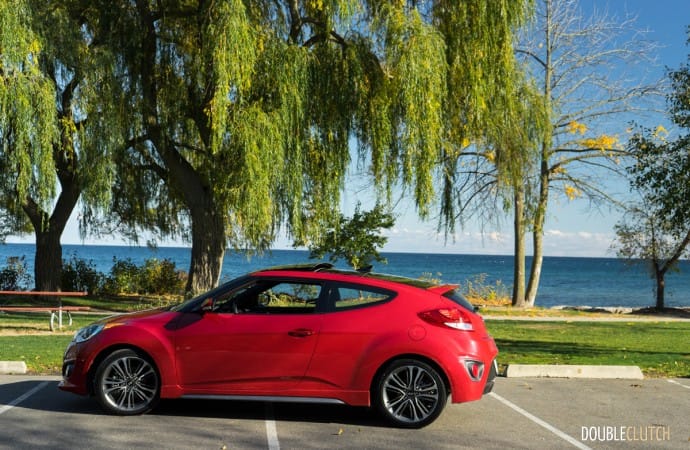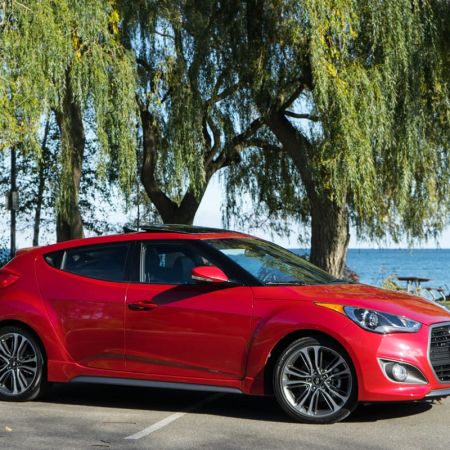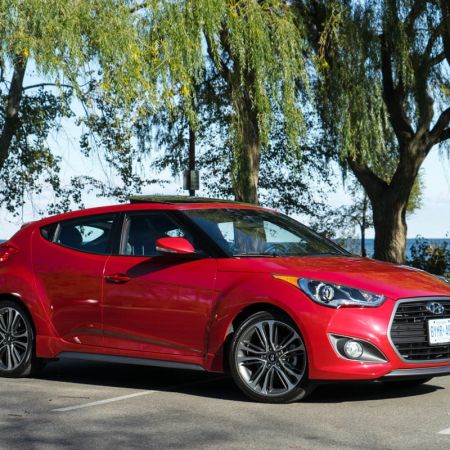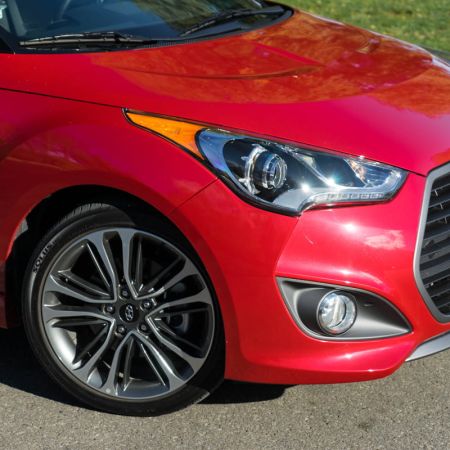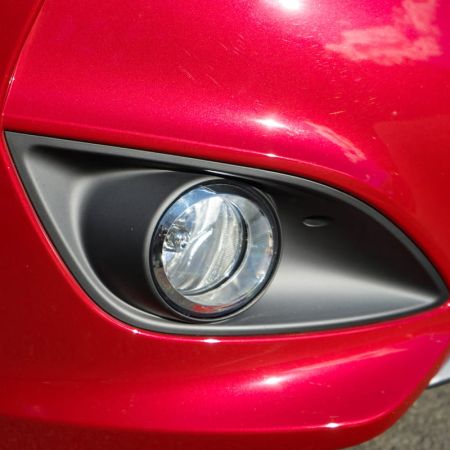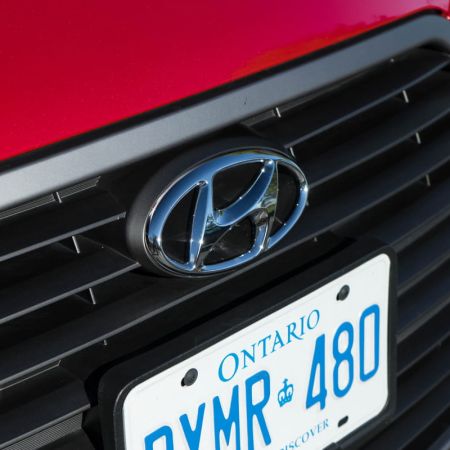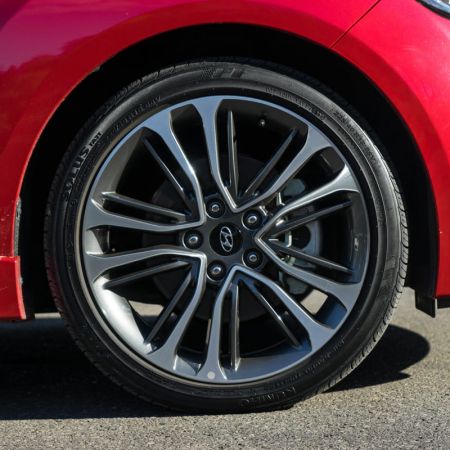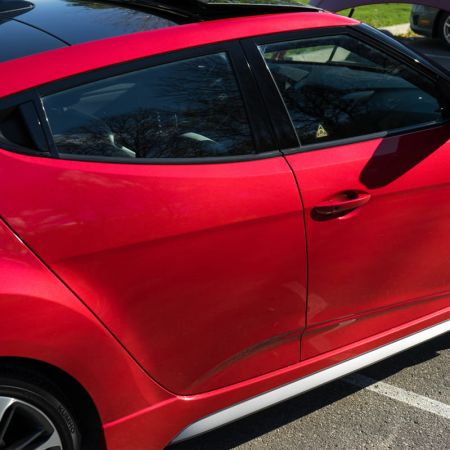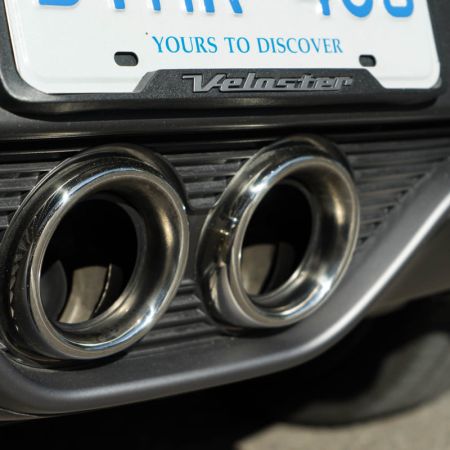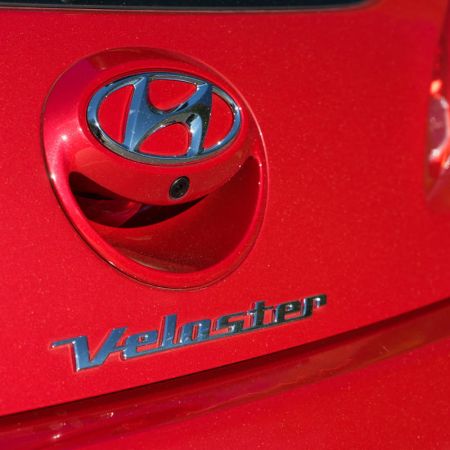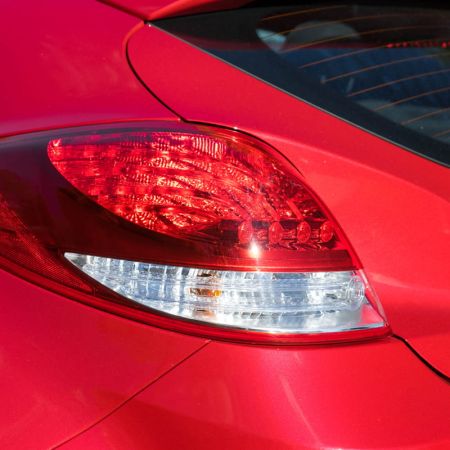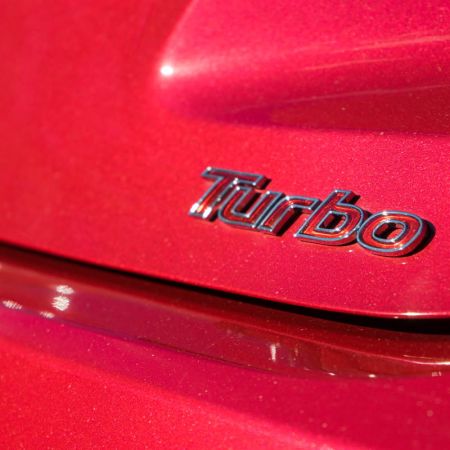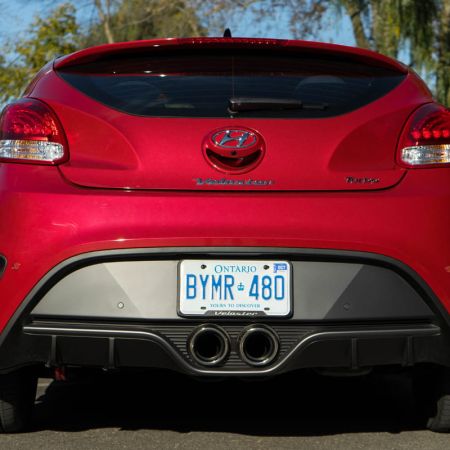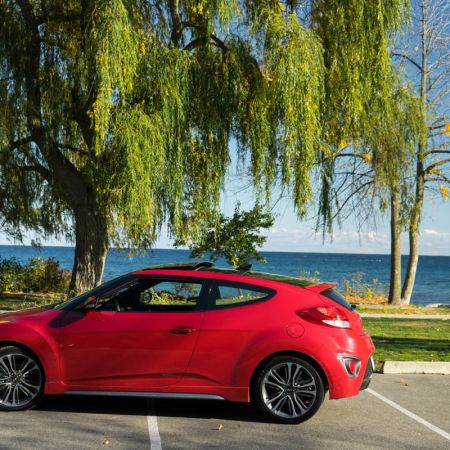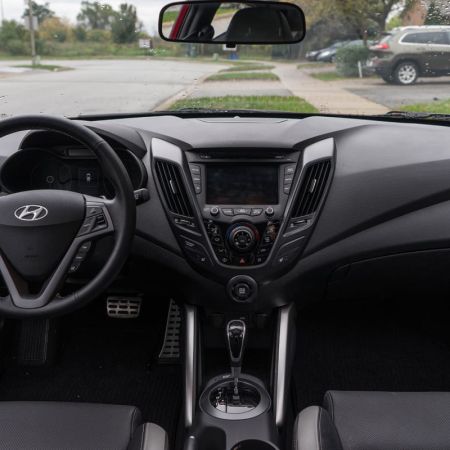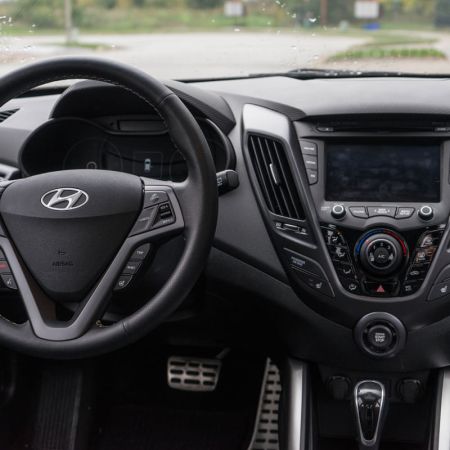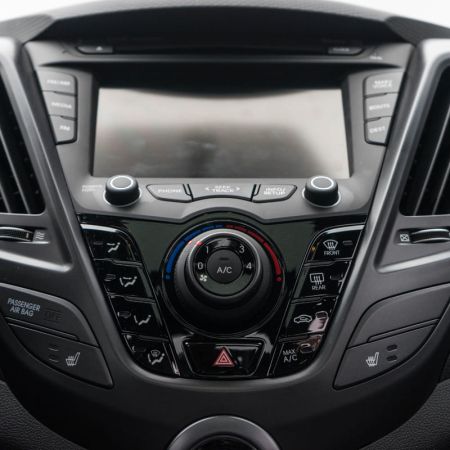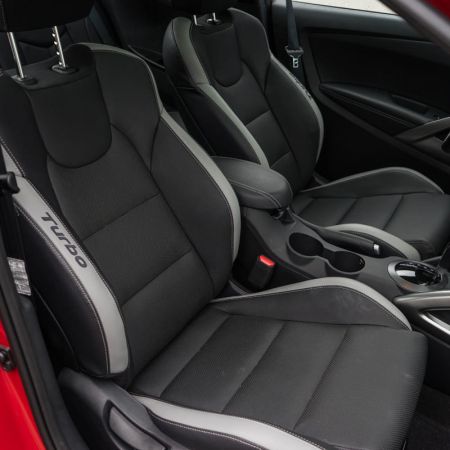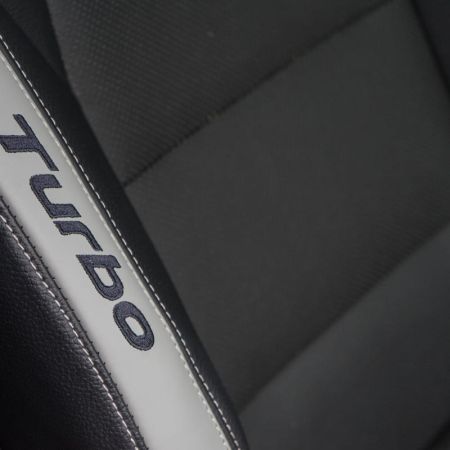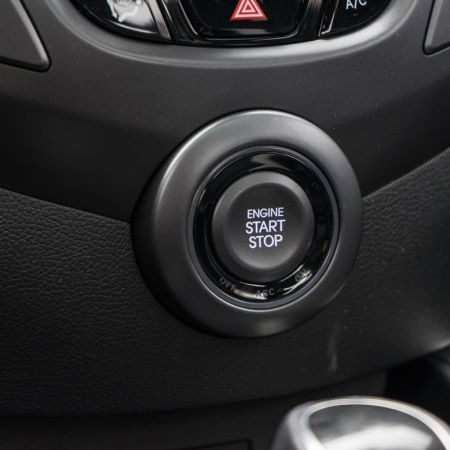Since 2011, Hyundai has been unleashing the Veloster out into the wild, one new customer at a time. With a name like Veloster, you’d imagine that the car in question is either mean and aggressive, or rather something a little bit silly. With an asymmetric design, the drivers side of the car sports one big door, similar to that found on any coupe, whereas the passenger side has both a front, and rear passenger door for easy access. It’s really a question of how unique you want to be out on the roads. As far as power goes, the Veloster is available in both regular and Turbo variants. For our testing purposes, we were handed the 2017 Hyundai Veloster Turbo, with a dual-clutch automatic transmission.
Since day one, the Veloster was the alternative choice for drivers looking for a hot hatch to maneuver around traffic or out on the highway. Whether it was a viable option for them or not, the Veloster certainly has captured a niche market. The exterior of the Veloster Turbo is equipped with sportier accents otherwise not found on the base model. Most prominent is the massive, dark front grill that arguably takes up the majority of the front fascia. Circular fog lights replace the standard shape and are surrounded by dark plastic with chrome embellishments.
This is now the point to which I start questioning the designers at Hyundai. The headlamps are equipped with LED accent lights that would be a perfect option for daytime running lights, which would give the Veloster a premium look, and the rear brake lights are LEDs. However, the daytime running lights on this car consist of standard halogen bulbs, along with halogen projector bulbs as low-beams night driving. The accented LEDs in question are only activated when the full lighting system is activated at night. My question is, why not remove the unnecessary halogen running lights and opt for the pre-existing LEDs? It’s a bit of an awkward setup, but seems to work.
One thing that is specifically unique to the Veloster is the aforementioned door configuration. Most hatchbacks are available in what we know as a three or five-door setup. The Veloster is rebellious, choosing to go against the establishment, electing to stick with a four-door arrangement. This is one of the few cars in existence that secretly look different depending on which side you stand on. The driver’s side door resembles that of a three-door, while the passenger side decidedly looks like that of a five-door. Maybe this was a unanimous decision by the engineers, or perhaps it was a compromise between two chiefs that simply refused to accept the other’s design. The third passenger access point allows for easy entry to the rear seats, let it be for two additional occupants or the occasional duffle bag.
Another welcomed upgrade from the base model are the Turbo’s rear exhaust tips. This is by far the most exciting design element of this car, as it adds that intangible sense of speed commonly associated with proper sports cars. These snazzy looking tips are but only a pretty face, with no loud voice exuding from the pipes behind the scenes. Basically, it doesn’t sound all that great, though admittedly Hyundai has done a great job funneling synthetic noise into the cabin so that the passengers may enjoy some rumble. One other identifying point of the Turbo model are the unique alloy wheels that are stylish and aggressive.
The Veloster Turbo is powered by a tuned version of the 1.6L turbocharged GDI inline four-cylinder engine, producing 201 horsepower and 195 lb-ft of torque at 1750RPM. This is quite the jump from the 132 horsepower the base model has to offer. Our tester was equipped with the seven-speed dual-clutch transmission (DCT) with flappy paddle shifters. A manual transmission is also available, and was the original offering on the Turbo – the DCT was new last year. Hyundai rates this car at 8.9L/100km city, 7.1L/100km highway, and 8.1L/100km total combined average. It’s very much possible to achieve these standards set by Hyundai, though for someone with a slightly heavy foot and a need for spirited driving, expect a combined average closer to 10L/100km.
The interior is where things start to get a little surprising. Refinement was not part of the agenda when assembling the interior of this car. Granted, the right thoughts were there and the design was well executed with sport buckets seats embroidered with the word “Turbo” along the bolsters. We found that the overall execution was just off and a bit awkward. The plastic paddle shifters squeaked and creaked with every shift, and felt cheap. The seating position for taller individuals such as myself feels stressed due to an awkward steering position and a lack of headroom.
The 2017 Hyundai Veloster Turbo is definitely a unique choice for someone looking to hop into the hatchback segment. The Turbo model gives drivers a deserved power boost along with well-appointed cosmetic upgrades, alongside some suspension upgrades that stiffen the ride ever so slightly and add to overall dynamics. As tested, our Veloster stickered aggressively for $27,199. This pricing places the Veloster next to the Ford Fiesta ST (reviewed here) and barely touches pricing for the VW Golf GTI. While I would consider the ST and GTI to be superb hot hatches, I’m forced to acknowledge the Veloster Turbo as a warm hatch, or a suitable daily commuter.


